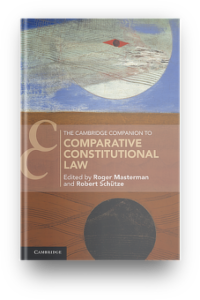This chapter addresses the issue of democracy, in the context of this book on comparative constitutional law. It is readily apparent that the topic could be addressed from very different perspectives. Thus, the entire chapter could be directed towards differences between democratic and non- democratic constitutions. It might, alternatively, consider differences between constitutions within democratic polities, examining whether there are, or should be, constitutional differences that fl ow from different forms of democracy, or how far such differences result from the elevation of socioeconomic norms to constitutional status. The chapter might have a different, more empirical, emphasis, with discussion as to the relative importance of constitutions in different countries. These are all significant issues, and each would occupy the entire chapter. They are not, however, addressed here.
The focus of this chapter is, rather, on the relationship between constitutional review and democracy. This is, in itself, a major task, given the volume of literature devoted to the issue. It, nonetheless, remains an important topic, and the balance of opinion has ebbed and fl owed over time. What follows is not, however, a literature review. It is, moreover, not possible within the space available to address all issues pertinent to this debate, nor to examine each issue in the depth that it might warrant. The objective is, however, to provide the reader with a view of some central facets of the debate in this area, including also issues that are relevant to the discourse, but which are commonly ignored or treated interstitially. The structure of the argument is as follows.
The first section considers strong constitutional review, and begins by reiterating the core argument against such review advanced in the literature. This is followed by closer analysis of certain key issues that are central to this debate. They include the relationship between law and disagreement; the relevance of constitutional or legislative choice for such a mode of review; and the relationship between the existence of such powers of review, and the standard and intensity with which they are deployed. The first section ends with examination of strong constitutional review in the EU, which provides an interesting example against which to test a number of the issues raised hitherto.
The second section addresses soft constitutional review, and begins by examining the rationale for this form of review. The ensuing discussion reflects on a number of the prominent issues that have arisen in debate about this form of review. They include the legitimating function of legislative choice for this form of review; the critique that the line between strong and soft constitutional review is largely illusory; the democratic tension that flows from the strong principles of interpretation that are commonly used in this form of review; and the relationship between the existence of such powers of review, and the standard and intensity with which they are deployed.
The final section proffers some brief thoughts concerning the relationship between non- constitutional review and democracy. This book is about comparative constitutional law, but the line between constitutional and non- constitutional review can be a fine one. This is the rationale for the brief discussion as to the relationship between non- constitutional review, representative democracy and participatory democracy.
